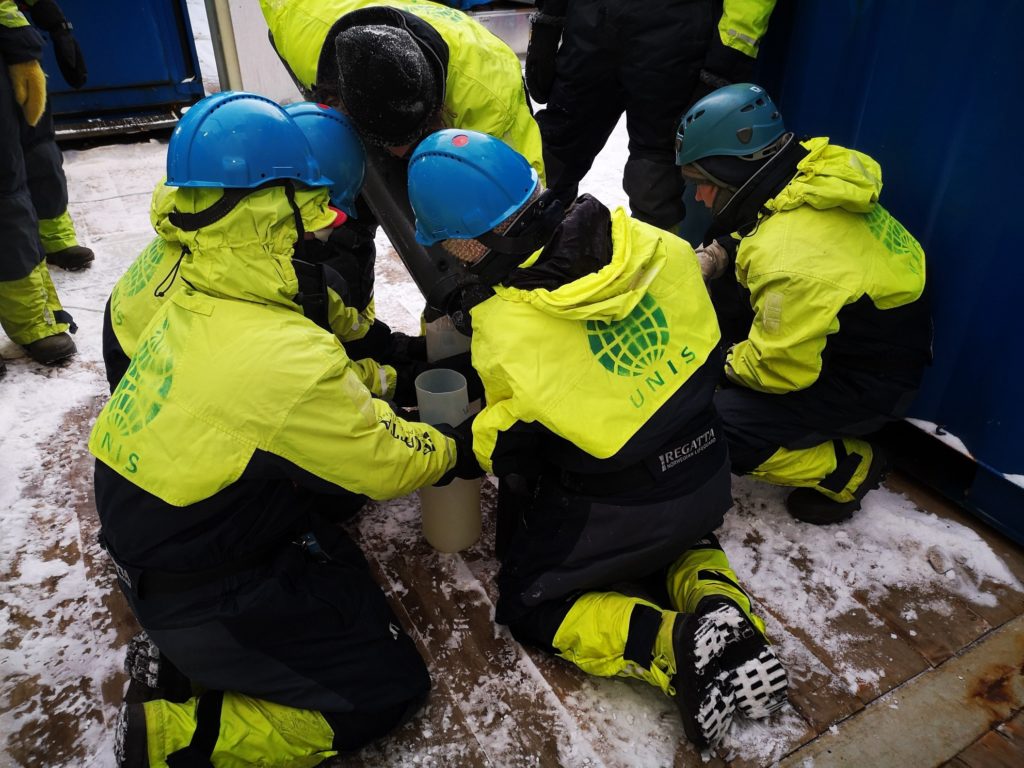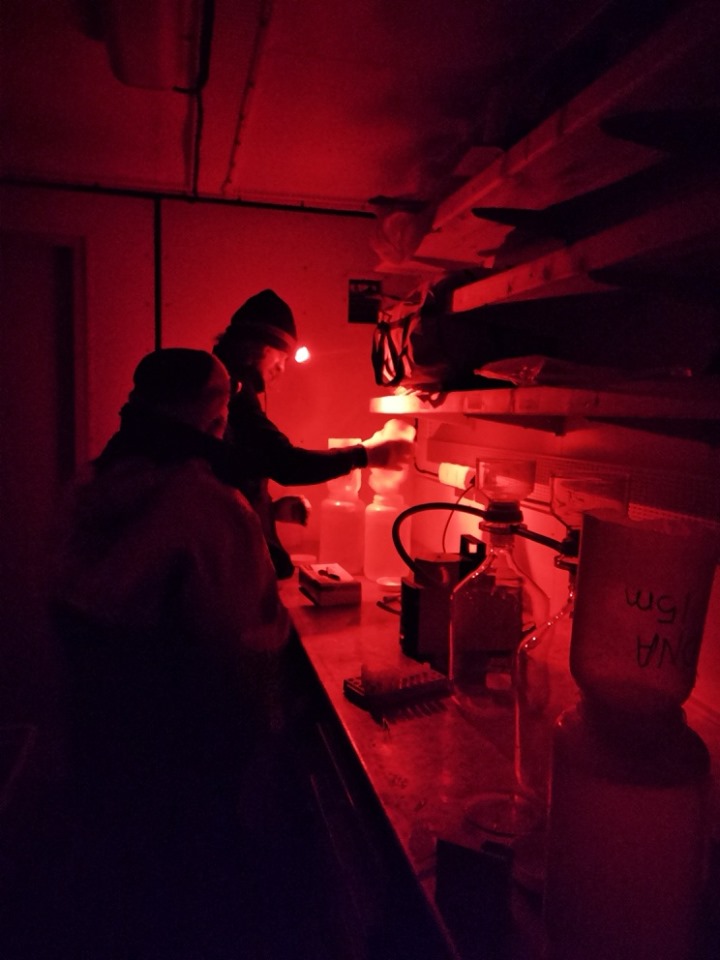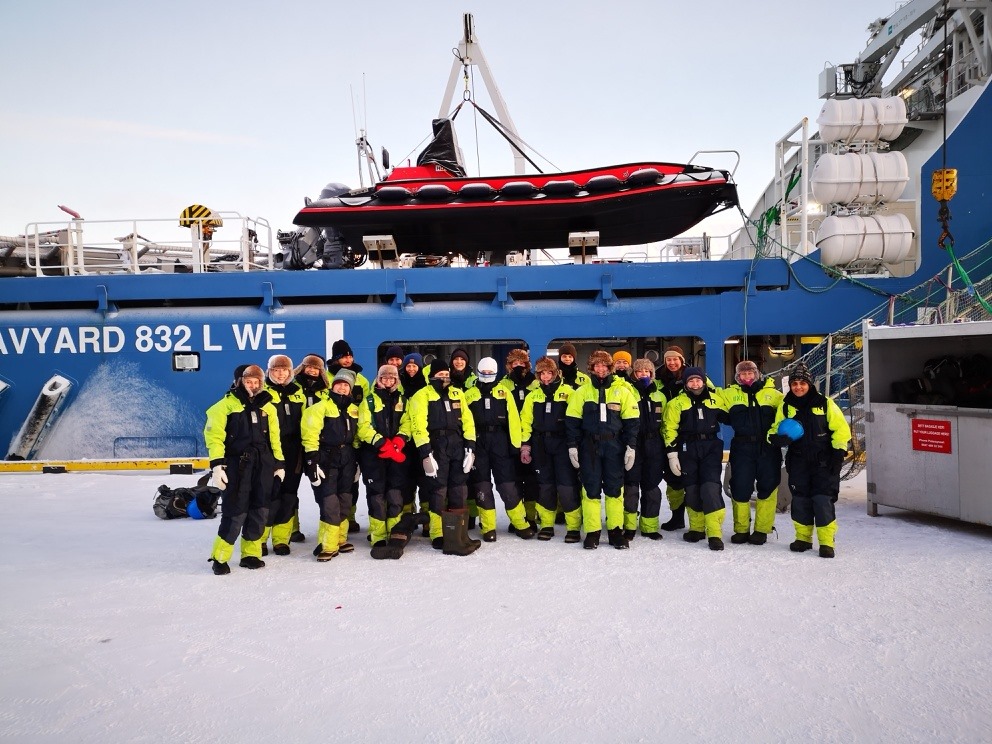Helpful hands and practical skill training through UNISprout
Through my last two field sampling trips during the Polar night period I have been so lucky to be assisted by a UNISprout bachelor student – Johannes, who had applied to join in on a 40 hour internship within my project. I myself am a PhD student from India doing research on potential changes in biodiversity, community composition and functions of microbial eukaryotes with respect to the changing climate in the Arctic.

My fieldwork mainly focuses on collecting monthly water samples to estimate the change in diversity and compositional measures for protist communities at the IsA station, a well-established time series station laying in the mouth of Adventfjorden. To be able to reach this station, the UNIS boat Polar Circle is used during the summer/autumn season and the Governors boat Polarsyssel during the winter and spring season.
Fieldwork like this has to be planned and organized well, especially considering the conditions that exist in January and February at Svalbard with total darkness and freezing cold temperatures out on the fjord. This involves some packing slightly in advance, despite being on shorter fieldtrips like these. This is also a part of being a scientist, and Johannes joined in on this work as well. The packing usually takes us half a day – finding equipment, putting it all in one place, packing suitable clothing etc. We also ensure a day before sampling that our filtration equipment is ready for the next day.

The sampling days are usually long starting off with half a day of fieldwork out on the fjord before heading back to UNIS to conduct filtrations of the collected water samples for the rest of the day. It was both Johannes’ and my first-hand experience with winter sampling. While the cold fingers and strong breeze slowed down our work on the boat it did not break our motivation to get the job done. The field tasks involve collecting plankton with a plankton net and sending down the CTD to record temperature, salinity, fluorescence, conductance etc. of the water column. We also collect water samples at two different standard depths with the help of a niskin bottle for several different kinds of measurements and take light measurements with the help of a Li-Cor around noon to measure the amount of light reaching in the water column.
Even though this was a short term arrangement due to the Corona situation, it has been a great opportunity for me to have a bachelor student helping me with my fieldwork. And I think it is important as well for the bachelor students to have such a learning experience. It is for this reason, I feel that UNISprout acts as a bridge between the researchers of today and the researchers of tomorrow. Through projects like this, we as researchers get an opportunity to work with bachelor students on real current research and to train them on skills that will be important also for their future career.
Cheshtaa Chitkara




